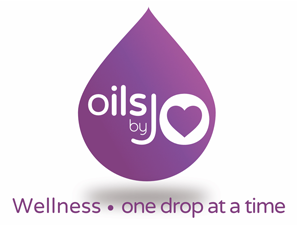About Essential Oils
The History of Essential Oils
Frankincense and myrrh essential oils were brought as gifts to the Baby Jesus. In fact, frankincense and myrrh were worth as much as gold was during those days; and the reason is they were the most effective forms of plant-based medicine.
Frankincense, for instance, was used during that time to reduce bruising. It’s also great with the nervous system, so it would have been rubbed on a child after birth to support its growth and development and protect its immune system. Myrrh essential oil is a natural antiseptic. so, it would have been rubbed around the umbilical cord to keep that area from getting infected after birth.
Essential oils were also used in Chinese and Egyptian medicine and several hundred litres of partly empty alabaster jars of essential oils were found in King Tut’s tomb. It’s actually been documented that Cleopatra opened the first beauty spa and she used essential oils in her treatments.
Hippocrates, the father of modern medicine, famous for saying, “Let food be thy medicine,” prescribed essential oils for healing over 2,000 years ago. So, why were essential oils used so widely throughout the Bible and throughout Egyptian and Chinese medicine?
Well, one reason essential oils were used so much throughout history is because they are easy to extract from plants… and your body naturally knows how to work with plants and oil-based compounds.
How to use Essential Oils
Be sure to use only 100% pure therapeutic grade essential oils and follow all label warnings and instructions. It is important to remember that pure therapeutic grade essential oils are very potent, and that each person will react differently to the oils, depending on their age, weight and health.

When using an essential oil for the first time…
…I recommend that you do a small skin patch test. Dilute one drop in 5 ml of carrier oil and apply to a non-sensitive area to see if there is any sort of reaction.
If redness or irritation occurs when using essential oils topically, apply a vegetable oil such as fractionated coconut oil or olive oil to the affected area.
Always dilute essential oils in a carrier oil when using them on babies and infants, as well as when using the more potent essential oils.
Start by using just one drop…
…and slowly increase until the desired effect has been achieved. Consult your doctor before using essential oils if you are pregnant or under a doctor’s care or if you have other safety questions regarding essential oils.

Essential oils should not be used in the eyes…
…inside the ear canal or nose. In the event of accidental contact with the eyes, dilute with vegetable oil NOT water.
Avoid using essential oils on a baby or young child’s hands, as they may transfer the oil to their eyes or mouth.
Some essential oils are known as hot oils…
…these include Cassia, Cinnamon, Clove, Oregano and Thyme. When using these essential oils, I always recommend that you heavily dilute them to avoid skin irritation.
Other essential oils that may cause some skin irritation include Black Pepper, Citrus Oils, Eucalyptus, Fennel, Ginger, Lemongrass, Peppermint and Wintergreen.

Citrus Oils contain photosensitizers…
…that shorten the time it takes to get sunburnt when applied to the skin. Therefore, I recommend that you avoid direct sunlight for 12 hours after using citrus oils on the skin.
Do not consume an essential oil internally…
…unless there is a supplement facts label with specific dietary supplement use instructions and warnings.
Arborvitae, Cedarwood, Eucalyptus, White Fir or Wintergreen are not recommended for internal use.
If you are pregnant…
…breastfeeding or have liver or immune issues, please talk with your health care provider before using internally.

Remember essential oils and water do not mix…
…when adding essential oils to your drinking water, make sure you either stir or shake the bottle of water before drinking to disperse the oils. Do not store in plastic bottles, only use glass containers.
Discontinue the use…
…of an essential oil if you experience severe skin, stomach, or respiratory irritation or discomfort.
Essential oils can be flammable…
…so keep away from heat sources and keep out of reach of babies and children.
Topical Use…
…the ratio of essential oils to carrier oil will be dependent on the size, age and health of the person you are making the blend for.
Please do browse through the information on this website and don’t hesitate
to contact me for any advice or information, Jo.
Here are some simple guidelines to get you started:
- Babies/Infants: 0.3%-0.5% dilution (1 drop in 10 ml carrier oil)
- Children (under 12): 1:0% dilution (3 drops in 10 ml carrier oil)
- Adults: 2:0-5:0% dilution (6-15 drops to 10 ml carrier oil)
Internal Use – once again, the dose will depend on the age, size and health status of the person however; I would initially start on a lower dose (1–2 drops) and then increase the dose if needed; there is no benefit to using a stronger dose. Use the amount recommended below and repeat the dose every 4-6 hours if required, but do not exceed the maximum amount within a 24-hour period. - Internal – 2-4 drops (maximum 12-24 drops in 24 hours)
- Oral – 1-3 drops (maximum 4-18 drops in 24 hours)
Child (Over 6 years): - Internal – 1-2 drops (maximum 3-13 drops in 24 hours)





